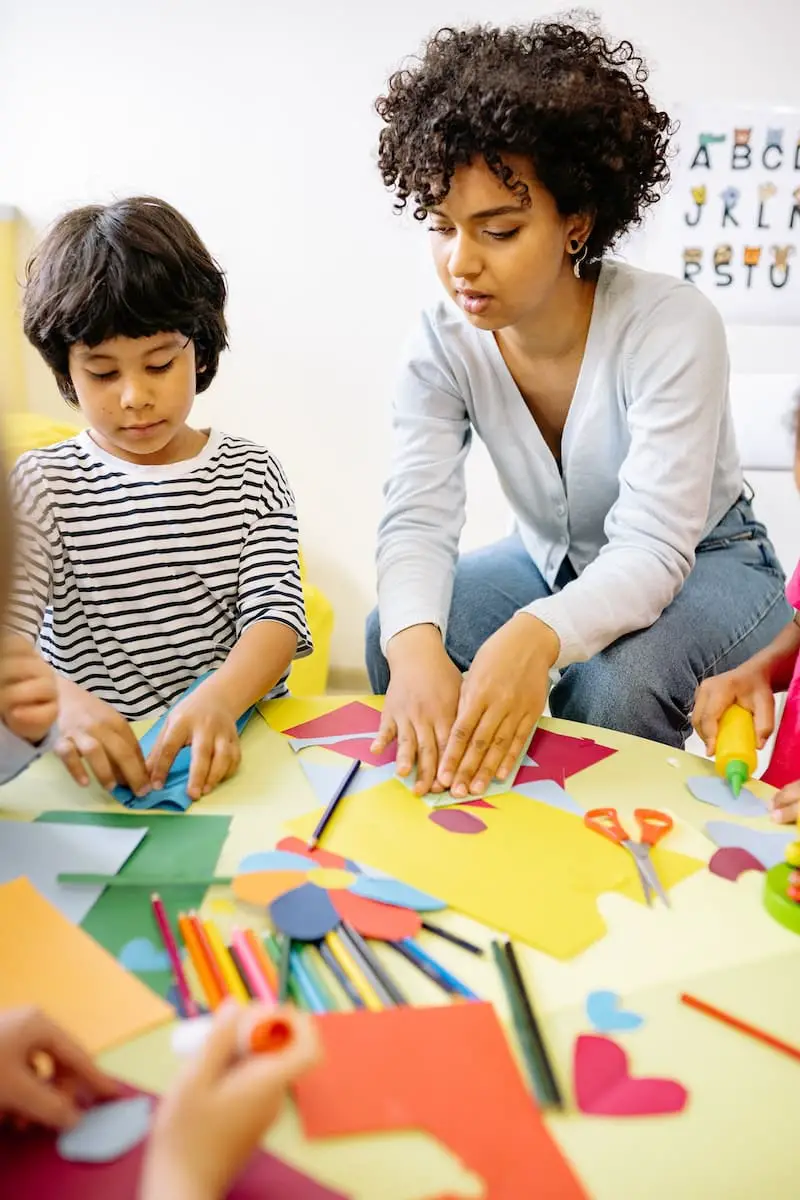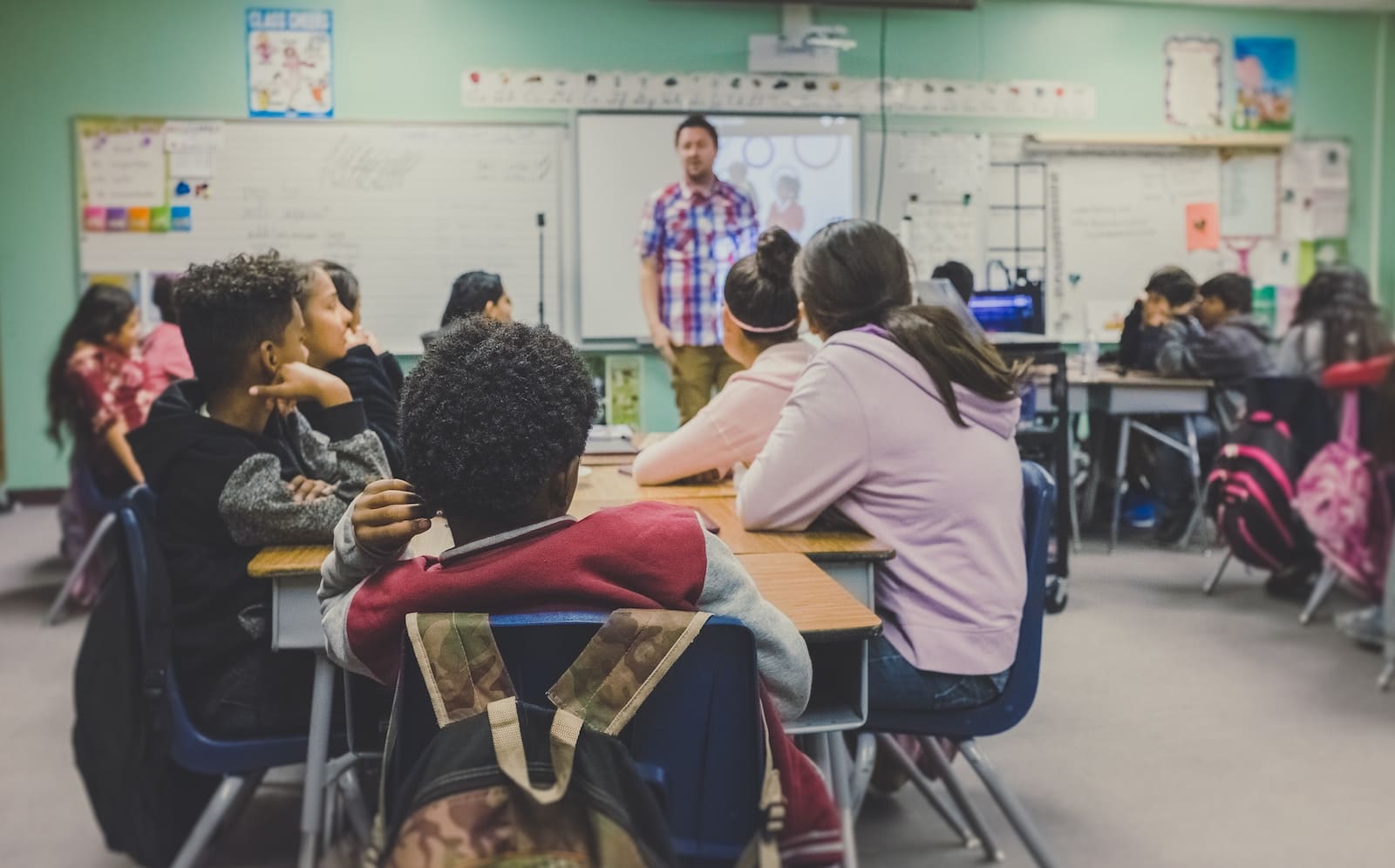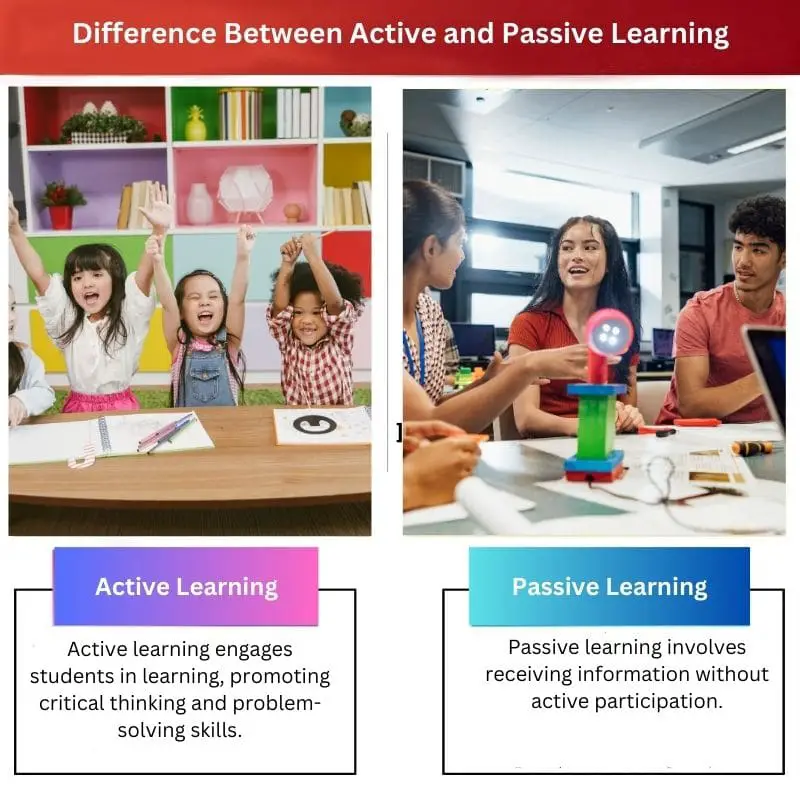Active learning is the method of learning in which the teacher and students play an equal role in making the learning environment, while in passive learning, most of the job is done by the instructor, and students are only responsible for grasping the knowledge.
The Constructivism concept of learning, which emphasizes that students construct, is the foundation of active learning.
Dialogue between instructor and student is encouraged frequently during active learning.
The level of learning may be determined via this feedback loop for both the instructor and the student.
Furthermore, it encourages student engagement and attention, sparking discussion and fostering the growth of critical thinking.
In passive learning, the learners’ only role is to be passive recipients.
The teacher is viewed as an expert in passive learning, and it is expected that the teacher’s primary responsibility is to transmit knowledge.
The most common passive learning techniques are lecturing, direct teaching, narration, and the use of comparisons.
Another common effect of passive learning is a lack of knowledge of the subject matter.
Key Takeaways
- Active learning engages students in learning, promoting critical thinking and problem-solving skills, while passive learning involves receiving information without active participation.
- Active learning leads to better retention and understanding of the material than passive learning.
- Examples of active learning include group discussions, projects, and hands-on activities, whereas passive learning includes lectures and reading assignments.

Active vs Passive Learning
When an individual actively gets involved in an activity or an experiment, or a discussion to learn something, it’s called active learning. Passive Learning is done when an individual memorizes and internalizes the information provided to him/her without getting involved in hands-on activities.
Comparison Table
| Parameters of Comparison | Active Learning | Passive Learning |
|---|---|---|
| Student Involvement | high | Very less |
| Learning | Student-centered | Teacher-centered |
| Responsibility | Student and teacher | Teacher only |
| Role of teacher | Facilitator | Dictator/master |
| Advantage | Frequent feedback | More information presented |
What is Active Learning?
Active learning is the type of learning which requires active interaction between the teacher and students.
It does not focus on classroom instruction but rather on interactive learning sessions and requires complete participation from the student.
The Constructivism concept of learning, which emphasizes that students construct, is the foundation of active learning.
Due to the extended attention span that keeps the mind completely engaged during active learning, the learner may not easily get bored.
Therefore, active learning refers to any tactics that stimulate activities, including the learners performing tasks independently and reflecting on what they are doing.
Active learning involves more than just listening to lectures, thus students should read, write, interact, discuss, and participate in problem-solving activities.
The process of learning is regarded as a conflict among differing ideas, and it is the integration of those ideas that create new knowledge.
Dialogue between instructor and student is encouraged frequently during active learning. The level of learning may be determined via this feedback loop for both the instructor and the student.
Furthermore, it encourages student engagement and attention, sparking discussion and fostering the growth of critical thinking.

What is Passive Learning?
A learning method known as passive learning involves the teacher or instructor actively participating in the teaching process. In passive learning, the learners’ only role is to be passive recipients.
The teacher is viewed as an expert in passive learning, and it is expected that the teacher’s primary responsibility is to transmit knowledge.
On the other hand, the student’s role is to accept that information by acting passively, accepting what is taught, and not questioning it.
The most common passive learning techniques are lecturing, direct teaching, narration, and the use of comparisons.
Passive learning allows for the rapid presentation of a diverse set of information and knowledge.
It gives the teacher more control over the classroom environment while also organizing and improving how the content is presented.
Lectures, on the other hand, are quite boring. Students might lose interest in and enthusiasm for learning. Another common effect of passive learning is a lack of knowledge of the subject matter.
There is little feedback and few opportunities to evaluate how much is being absorbed.
Students are sometimes hesitant to raise questions and correct misunderstandings.

Main Differences Between Active and Passive Learning
- Student involvement is high in active learning as it is done by the collaboration of teacher and student however, in passive learning, there is less or no student involvement.
- Active learning is student-centred, while passive learning is teacher-centred
- In active learning teacher and student take equal responsibility, on the other hand, only the teacher takes responsibility.
- The role of a teacher is of a facilitator in active learning, and in passive learning, the teacher acts as a dictator.
- Active learning encourages involvement, conversation, and regular feedback while also fostering critical thinking. Passive learning allows the presentation of more information, gives the instructor better control, and enables a structured presentation of the material.






